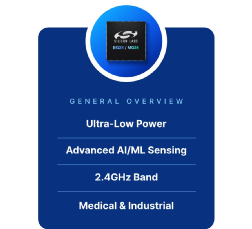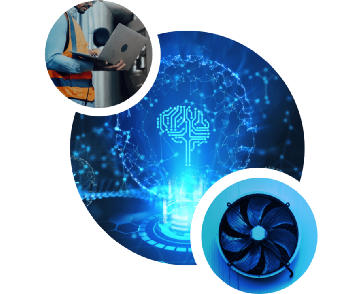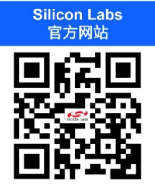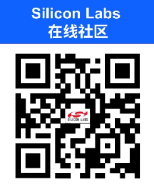Skip to content
As multi-protocol mesh networks become increasingly popular in industrial and medical IoT applications, ensuring excellent wireless performance in the congested 2.4 GHz band is a major challenge for device manufacturers. In light of these challenges, Silicon Labs (also known as “芯科科技”) has launched the ultra-low power BG24 and MG24 wireless SoC and module product series to unlock advanced sensors and AI/ML applications at the small edge in medical and industrial environments. We have also created an application article –“Multi-Protocol, Mesh Network SoC and Modules Drive Innovation in Medical and Industrial Applications”to detail the design trends in medical and industrial IoT. Click on theRead the Originalat the end of this article or visit the link below for the full content:https://cn.silabs.com/applications/industrial-and-commercial/mesh-network-in-industrial-and-medical-iot-applications
Emerging Market Demand and Opportunities in Medical and Industrial IoT
The global COVID-19 pandemic has posed unprecedented challenges to healthcare systems, including shortages of medical resources, increased patient numbers, and greater complexity in clinic and facility management. During the care of critical cases, there can be no mistakes in workflows or temporary inability to locate medical devices. If instruments are forgotten, it can slow down the surgical process, with nurses spending an average of about 20 minutes per shift searching for instruments. This equates to a loss of $500,000 due to ineffective work.
IoT-enabled solutions can improve overall performance in the healthcare vertical, drive better working conditions, and enhance patient care in hospitals. Therefore, it is expected that by 2027, the IoT healthcare market will reach $469.4 billion, growing at a compound annual growth rate (CAGR) of 20.9%.
Predictions indicate that the industrial sector will also see similar growth prospects. From 2021 to 2028, the CAGR is projected at 22.8%, with the market size expected to reach $1.1 trillion by 2028. Clearly, more and more companies are recognizing the value of IoT-enabled solutions in improving operations. By enhancing existing infrastructure with wireless connectivity, the industrial sector is harnessing the power of IoT to reduce unexpected downtime, increase output, and improve personnel safety.
This trajectory translates into innovative IoT solutions, ready to transform the existing industries as we know them. So, what is preventing some device manufacturers from capitalizing on these revenue opportunities? The answer: the complex development processes that ensure reliable connections across fragmented multi-protocol environments.
Silicon Labs’ new BG24 and MG24 are designed to achieve 2.4 GHz wireless performance, enabling device manufacturers to develop secure, intelligent devices and bring them to market faster. These two products have been added to the company’s SoC portfolio, strengthening our integrated hardware and software platform products to help unlock new industrial and medical opportunities.
Outstanding RF Link Performance Without Compromising Energy Efficiency
It is well-known that RF conditions in industrial environments are very harsh, with line-of-sight obstacles including thick walls, metal enclosures, rotating equipment, and other electromagnetic waves generated during manufacturing processes, posing significant challenges for device manufacturers. Worse still, these rapidly growing applications operate in the congested 2.4GHz transmission band, placing higher demands on RF modules.
RF transmission can negatively impact the energy consumption of any connected device, especially battery-powered devices. When powered by coin batteries, every ounce of energy is crucial. Therefore, optimizing battery life cycle is a primary design consideration for devices.
For the 802.15.4 technology used in Zigbee and Matter, the BG24 and MG24 SoCs offer exceptional performance in the market with a 124dB ultra-low power RF communication link. This is achieved by providing up to +19.5 dBm of transmit power and -104.5 dBm of receiver sensitivity.
Typically, this level of wireless performance means trade-offs in energy efficiency. However, by fine-tuning sleep mode current and scheduling the data transmission time of battery-powered devices, a low-power energy consumption profile is achieved, ensuring the excellent reliability and latency of these SoCs.
-
Explorethe BG24 Series:https://cn.silabs.com/wireless/bluetooth/efr32bg24-series-2-socs
-
Learn aboutthe MG24 Series:https://cn.silabs.com/wireless/zigbee/efr32mg24-series-2-socs
Reliability of Mesh Networks Under Lumen Heat
As the LED market transforms, interconnected lighting systems further reduce energy costs and carbon emissions in commercial buildings. By deploying battery-powered daylight sensors, wireless technology significantly lowers installation costs. Communication with fixtures becomes easy to implement and scale without the need for wiring.
This also opens up opportunities for additional value-added services. Since fixtures are ubiquitous in buildings, commercial building owners are turning to smart lighting to better understand their buildings, creating a more pleasant and efficient working environment. Valuable operational insights can also be obtained, covering air quality, space utilization, occupancy comfort, and guest occupancy statistics, among others.
A major challenge in implementing smart lighting is achieving interoperability between current communication protocols. The new MG24 has enough memory space to host multiple wireless protocol stacks without overloading the host MCU, providing dynamic multi-protocol configuration. This ensures the flexibility required in fragmented ecosystems with Bluetooth or Zigbee mesh networks. Additionally, the MG24 can reliably operate at temperatures up to 125°C, making it the most competitive SoC choice in the commercial lighting field.
Future-Ready Connected Medical Devices
For all IoT developers, one major barrier to fully leveraging their edge capabilities is resource constraints, such as memory space. Given that the lifespan of medical devices can be up to 10 years, expanded memory capacity ensures that deployed devices have space for additional software installations. As more healthcare regulations emerge, connected endpoints require on-site firmware and security updates.
The new BG24 SoC comes with embedded large memory capacity, making it an efficient, high-performance solution for medical devices. The BG24 supports Bluetooth mesh networks and provides extended memory resources for peripheral devices and remote wireless (OTA) software updates.
Industry-Leading Security
With the increasing ingenuity of scammers and hackers, both the medical and industrial sectors face numerous security challenges. The potential list of hackers is long, with device hijacking, data breaches, and man-in-the-middle attacks being quite common. To ensure that device manufacturers develop robust and secure solutions, the medical market is strictly regulated by industry standards and guidelines.
Silicon Lab injects the highest level of industry security certification, PSA Level 3 certified Secure Vault™ security technology at the SoC level, supporting device manufacturers in prioritizing cybersecurity from the outset. To further eliminate any security vulnerabilities, we also offer software security configuration services beyond flash programming. The Custom Part Manufacturing Service (CPMS) provides advanced security and unique certificates, with sample turnaround times of less than 4 weeks.
-
ExploreSecure Vault Security Technology:https://www.silabs.com/security/secure-vault
-
Learn about CPMS Services:https://cn.silabs.com/developers/custom-part-manufacturing-service
Achieving Accurate Measurements with Minimum BOM
In an interconnected world, industrial and healthcare environments share similar characteristics: both require high-quality sensor data to make informed decisions. While these industries continue to evolve, new demands are also placed on monitoring critical equipment and tracking personnel and patients, as well as transforming facilities and sites to improve efficiency, sustainability, and safety.
As accurate measurements ensure the robustness and reliability of systems, there is a strong focus on the underlying hardware and its design considerations. To ensure that the output values of sensor applications have higher resolution, device manufacturers need to choose wireless SoCs with advanced analog components capable of measuring minimal voltage/current changes.
The newly launched SoC series eliminates the need for external analog components, meeting industry benchmarks with built-in 20-ADC and 12-bit DAC, along with comparators. What does this mean for device manufacturers? High-precision measurements, reduced bill of materials (BOM) costs, and less printed circuit board (PCB) footprint. In addition to the obvious economic benefits, the BG24 and MG24 SoCs also genuinely simplify the development process.
Micro Edge AI/ML for Battery-Powered Devices
For any enterprise, the ability to fully leverage time-series sensor data becomes a key differentiator. Autonomous devices that can learn from their environment and operate in real-time can bring new efficiencies and unleash innovation. AI/ML is ready to re-equip and upgrade existing industrial and medical use cases. According to a survey by IoT for All, AI/ML applications are soon to move out of the hype phase, with the value of AI/ML in the IoT market expected to reach $16.2 billion by 2024.
In industrial environments, AI/ML is gaining momentum in predictive maintenance, where AI/ML detects anomalies in equipment conditions in a timely manner and can correct issues before any failures occur. In commercial building management, facility managers are beginning to use AI/ML to implement occupancy counting algorithms, redefining key building systems, including lighting and HVAC, as smart systems.
All these applications present time-sensitive use cases, where speed and latency are critical for identifying available insights. Placing edge computing in the cloud expands the data transmission window and requires significant infrastructure to store, transmit, and process data. Silicon Labs drives AI/ML processing at the micro edge for battery-powered devices through the new BG24 and MG24 SoCs by incorporating built-in AI/ML hardware accelerators at the chipset level. These SoCs are the industry’s first to unlock new AI/ML opportunities for battery-powered IoT devices, enhancing processing performance fourfold.Please check our recent wireless connectivity technology seminar: “Unboxing the New BG24 and MG24 SoCs”:https://cn.silabs.com/support/training/sneak-peek-unboxing-silicon-labs-new-bg24-and-mg24-socs
Scan the QR code below to follow Silicon Labs on social media platforms






